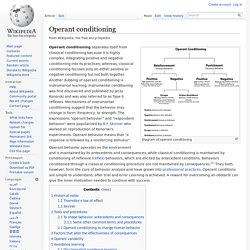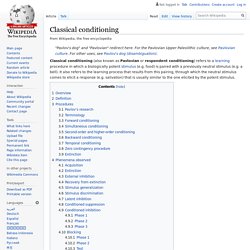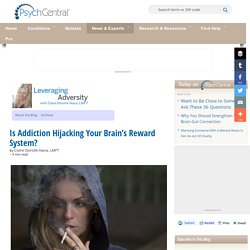

“There’s this basic circuit in the brain that energizes people to go out and get things that are intrinsically rewarding. This circuit lights up when we get money, or candy. It also lights up when we’re curious. When the circuit is activated, our brains release a chemical called dopamine, which gives us a high. The dopamine also seems to play a role in enhancing the connections between cells that are involved in learning.” Ranganath. Reward system. Primary rewards are a class of rewarding stimuli which facilitate the survival of one's self and offspring, and include homeostatic (e.g., palatable food) and reproductive (e.g., sexual contact and parental investment) rewards.[1][7] Intrinsic rewards are unconditioned rewards that are attractive and motivate behavior because they are inherently pleasurable.[1] Extrinsic rewards (e.g., money or seeing one's favorite sports team winning a game) are conditioned rewards that are attractive and motivate behavior, but are not inherently pleasurable.[1][8] Extrinsic rewards derive their motivational value as a result of a learned association (i.e., conditioning) with intrinsic rewards.[1] Extrinsic rewards may also elicit pleasure (e.g., euphoria from winning a lot of money in a lottery) after being classically conditioned with intrinsic rewards.[1] Definition[edit] The three primary functions of rewards are their capacity to:

Associative learning. Types Non-associative learning Non-associative learning can be divided into habituation and sensitization.

Habituation Sensitization Sensitization is an example of non-associative learning in which the progressive amplification of a response follows repeated administrations of a stimulus (Bell et al., 1995). Active learning Active learning occurs when a person takes control of his/her learning experience. The research works on the human learning process as a complex adaptive system developed by Peter Belohlavek showed that it is the concept that the individual has that drives the accommodation process to assimilate new knowledge in the long-term memory, defining learning as an intrinsically freedom-oriented and active process.[16] As a student-centered learning approach, the unicist reflection driven learning installs adaptive knowledge objects in the mind of the learner based on a cyclic process of: “action-reflection-action” to foster an adaptive behavior. [17] [18] Operant conditioning. Diagram of operant conditioning Operant conditioning separates itself from classical conditioning because it is highly complex, integrating positive and negative conditioning into its practices; whereas, classical conditioning focuses only on either positive or negative conditioning but not both together.

Another dubbing of operant conditioning is instrumental learning. Instrumental conditioning was first discovered and published by Jerzy Konorski and was also referred to as Type II reflexes. Mechanisms of instrumental conditioning suggest that the behavior may change in form, frequency, or strength. The expressions “operant behavior” and “respondent behavior" were popularized by B.F.
Classical conditioning. Overview[edit] Classical conditioning was first studied in detail by Ivan Pavlov through experiments with dogs and published in 1897.

It began when the Russian physiologist observed - while he was studying digestion - that the dogs serving as his subjects drooled when they were being served meat.[1] Together with operant conditioning, classical conditioning became the foundation of behaviorism, a school of psychology which was dominant in the mid-20th century and is still an important influence on the practice of psychological therapy and the study of animal behavior. Classical conditioning is a basic learning process, and its neural substrates are now beginning to be understood. Though it is sometimes hard to distinguish classical conditioning from other forms of associative learning (e.g. instrumental learning and human associative memory), a number of observations differentiate them, especially the contingencies whereby learning occurs.[2] Definition[edit] Procedures[edit] Is Addiction Hijacking Your Brain’s Reward System?
If we want to understand just how the brain’s reward system works – and how dopamine affects us – there is no better place to look than to addictions.

All addictions are driven by a neurochemical reward. Eating chocolate cake, working out, having sex, and winning money are all ways we can stimulate reward circuitry in the brain. And the reason these things (among many others) can become addictive is that when the pleasurable effects of a reward are associated with an activity, we want to do it more.
The problem with drug-induced rewards is that they don’t just link a reward to a behavior, they change the way our brain processes the reward. While previous research has shown that dopamine cells in the reward system send signals in cooperation with glutamate – called co-signaling – researchers at Uppsala University in Sweden have recently demonstrated mice who have become addicted to sugar and cocaine not only show lower levels of co-signaling, but lower levels of dopamine. References: Neurotransmitters of Pleasure. Endogenous Opioid System.
Novelty. Self-Motivation. Addiction. Nomophobia. How to Hack Your Habits. The Seeking System. Risk vs Reward.